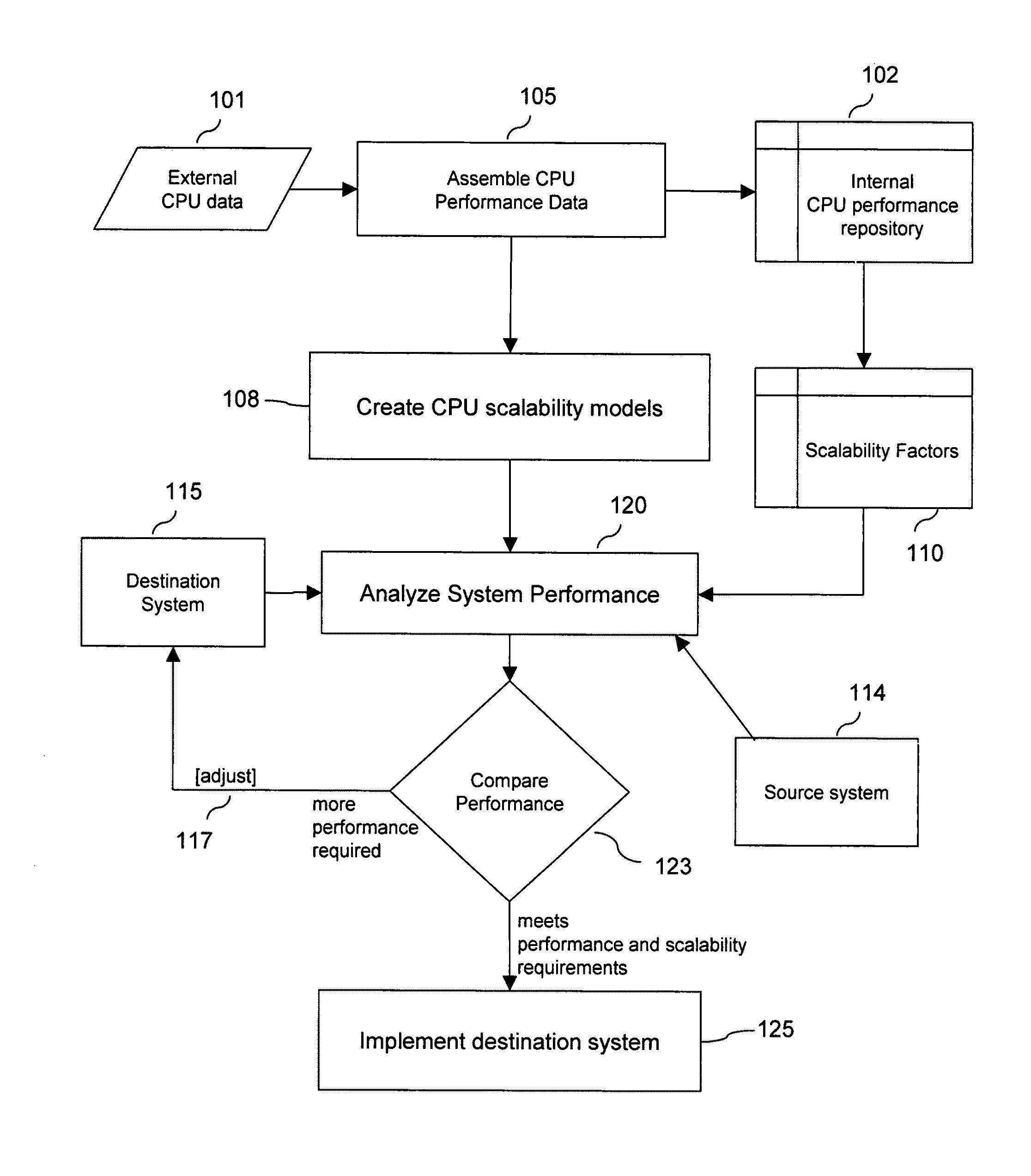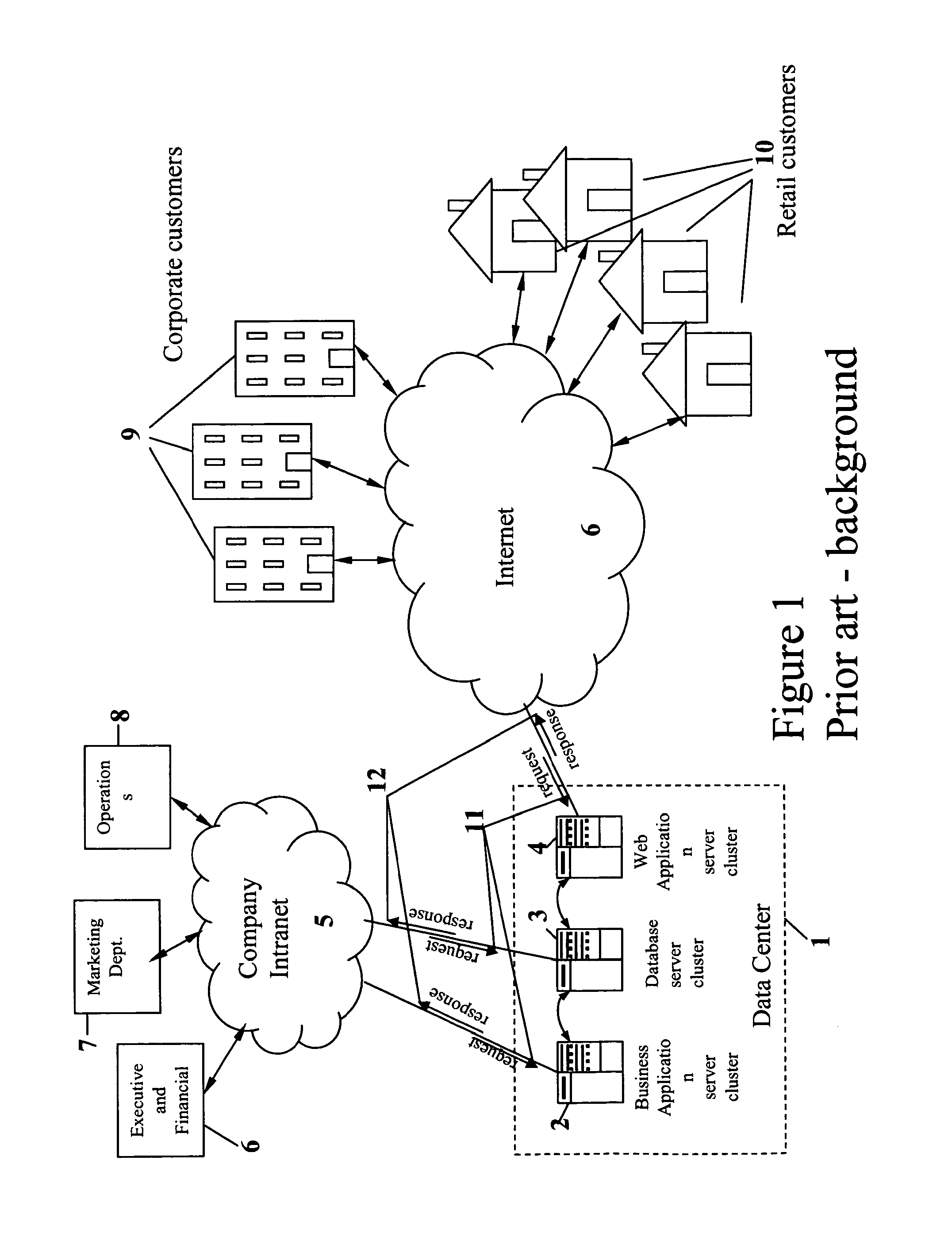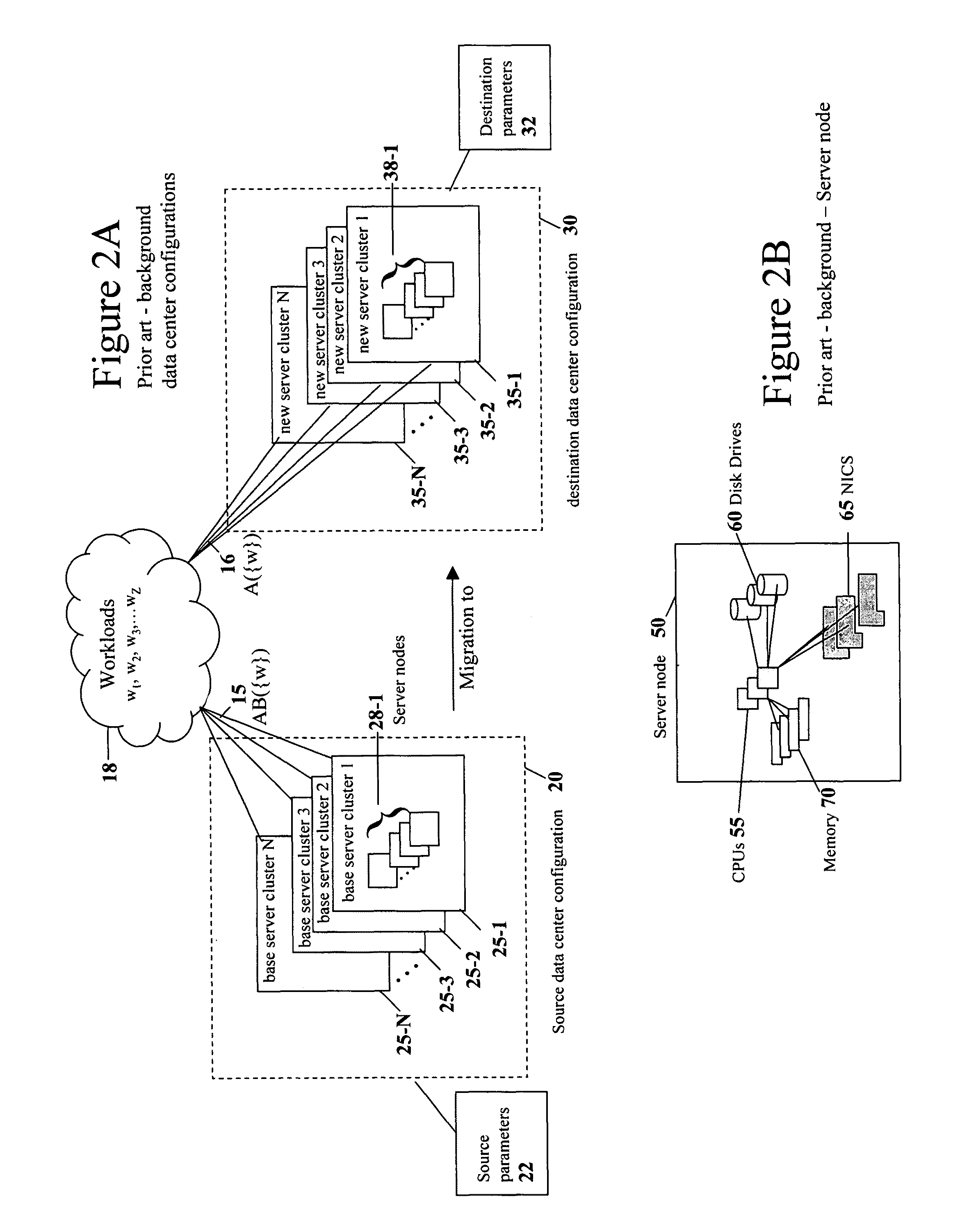System and method for capacity planning for systems with multithreaded multicore multiprocessor resources
a multi-core multi-processor and capacity planning technology, applied in memory systems, setting time indication, electric unknown time interval measurement, etc., can solve the problems of inability to effectively choose among the myriad of server consolidation options by trial and error or rules, and the number of server consolidation options in a modern large it environment is enormous
- Summary
- Abstract
- Description
- Claims
- Application Information
AI Technical Summary
Benefits of technology
Problems solved by technology
Method used
Image
Examples
second embodiment
estimating service times within the second embodiment analysis process of the present invention.
[0049]FIG. 12 is a flowchart depicting a preferred embodiment of the process for creating scalability factors from existing CPU performance data in the preferred embodiment of the present invention.
[0050]FIG. 13 is a flowchart depicting a preferred embodiment of the fit process for determining scalability factors from existing CPU performance data in the preferred embodiment of the present invention.
[0051]FIG. 14 is a flowchart depicting a preferred embodiment of the detailed process for creating scalability factors for operating systems from existing CPU performance data in the preferred embodiment of the present invention.
[0052]FIG. 15 is a flowchart depicting a preferred embodiment of the detailed process for creating scalability factors for threads and cores from existing CPU performance data in the preferred embodiment of the present invention.
[0053]FIG. 16 is a flowchart depicting a...
PUM
 Login to View More
Login to View More Abstract
Description
Claims
Application Information
 Login to View More
Login to View More - R&D
- Intellectual Property
- Life Sciences
- Materials
- Tech Scout
- Unparalleled Data Quality
- Higher Quality Content
- 60% Fewer Hallucinations
Browse by: Latest US Patents, China's latest patents, Technical Efficacy Thesaurus, Application Domain, Technology Topic, Popular Technical Reports.
© 2025 PatSnap. All rights reserved.Legal|Privacy policy|Modern Slavery Act Transparency Statement|Sitemap|About US| Contact US: help@patsnap.com



